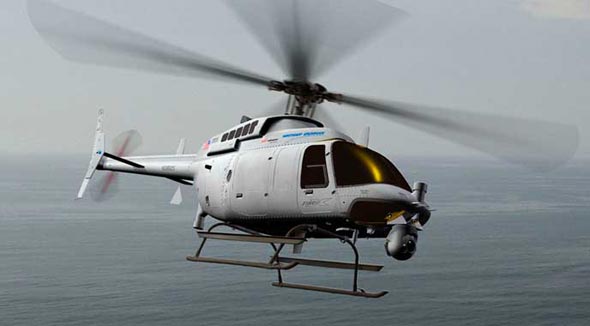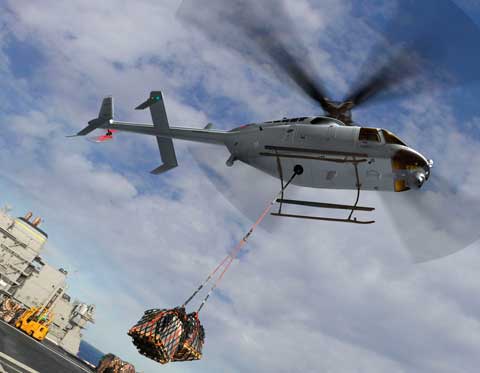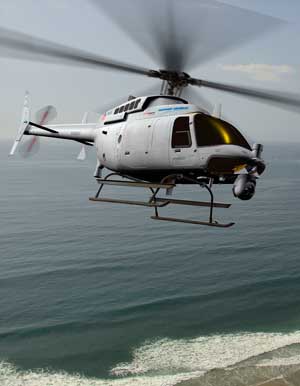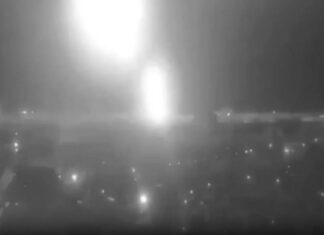Northrop Grumman and Bell Helicopter have teamed to demonstrate a new medium-range vertical unmanned system called ‘Fire-X’. This new UAV will be larger than the Fire-Scout currently produced by Northrop Grumman, utilizing the four-blade FAA-approved Bell-407 helicopter platform. The Fire-X will be capable of carrying payloads weighing up to 1.5 tons on missions extending over 14 hours. First flight of Fire-X is expected by the end of 2010. The development and demonstration program is being funded entirely by Northrop Grumman and Bell Helicopter. The new system also represents Northrop Grumman’s entry in an anticipated U.S. Navy competition in 2011 to demonstrate a new medium-range UAS.

According to Gene Fraser, sector vice president and general manager for the Advanced Programs and Technology division of Northrop Grumman’s Aerospace Systems sector said “the Fire-X will be an affordable, fast-fielding system that delivers the maturity of the unmanned systems architecture developed by the U.S. Navy’s MQ-8B Fire Scout program, while giving military services the extra UAS cargo, payload and endurance they seek.” The companies unveiled the new initiative at the Navy League Sea-Air-Space Exposition.

Fire-X will incorporate Fire Scout’s modular, field-proven architecture that accommodates a variety of intelligence, surveillance and reconnaissance (ISR) and communications payloads. It also provides complementary capabilities for missions that demand larger payloads (up to 3000 pounds), longer endurance (more than 14 hours) and robust cargo hauling (up to 2646 pounds external).
Fire-X is being designed to operate with nearly any type of current or future military standards-based control segment. It will communicate as easily with shipboard controllers using the Navy’s Tactical Control Station (TCS) as field commanders using the U.S. Army’s field-proven One System® ground control station.

“Fire-X delivers what military planners want, and what war fighters need: a reliable, low-cost vertical unmanned system that’s versatile enough to support the diverse ISR, cargo, and communications requirements of land and sea forces, while being rugged and persistent enough to stay in the fight until the mission is complete” said Gene Fraser, sector vice president and general manager for the Advanced Programs and Technology division of Northrop Grumman’s Aerospace Systems sector. “The Fire-X system integrates Northrop Grumman’s proven unmanned systems know-how with a proven, FAA-certified helicopter airframe that’s been in service since 1996,” Frased added, “The result will be an affordable, fast-fielding system that delivers the maturity of the unmanned systems architecture developed by the U.S. Navy’s MQ-8B Fire Scout program, while giving military services the extra UAS cargo, payload and endurance they seek.”
The new VT-UAV will be equipped with ISR sensors matured with the current FireScout, with additional payloads offering military users enhanced cargo hauling, multiple payload configurations and extended endurance capabilities. For the first time, users will be able to perform missions that demand larger payloads of up to 3,000 pounds, flying missions up to 14 hours and hauling up to 2,646 pounds of external cargo. The Fire-X will be operated with standard-based control segment, including the Navy’s Tactical Control Station, and the U.S. Army’s One System ground control station. “The Fire-X demonstration will illustrate how a marriage of manned and unmanned technologies can increase the capability, reduce the risks, and extend the utility of commercially available helicopters.” Said Jeff Lowinger, executive vice president for engineering, Bell Helicopter.



















